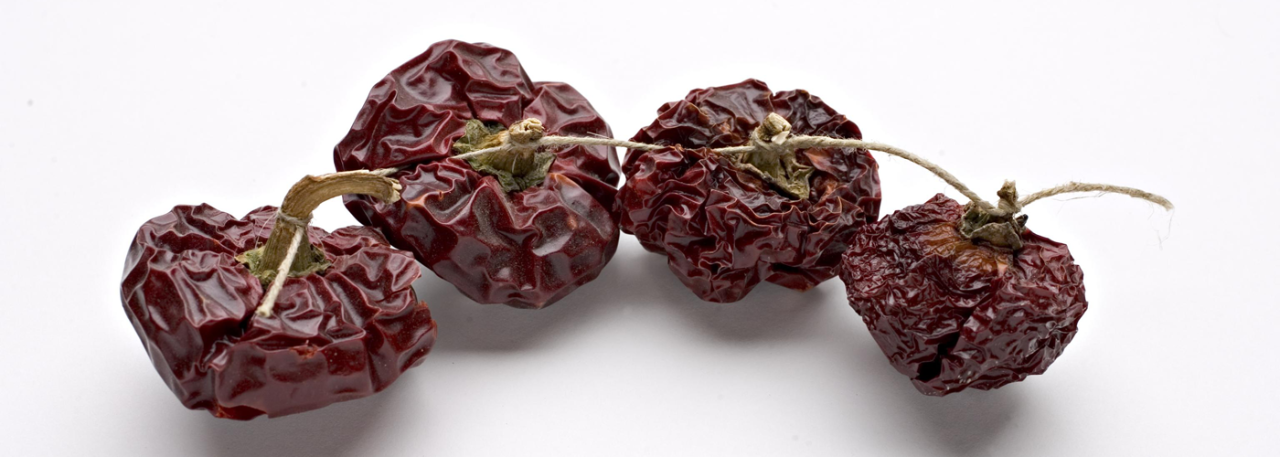.png.transform/rendition-xs/image_image%20(1).png)
Ñora
The ñora is a dried pepper mainly used to make pimentón (a type of Spanish paprika) in Murcia and to season dishes.
The scientific name of this pepper is Capsicum annuum, var. bola. Originally from Peru and Bolivia, this pepper has been used to make pimentón since Columbus brought it back from his first voyage to America and it was left in Yuste monastery (Extremadura), from where its cultivation was spread by the monks to their brothers in the Congregation of La Ñora, in Murcia.
Tasting notes
A pepper variety, bright red in color and fatty when ripe. It is a plant of the Solanaceae family producing hollow berries of different colors. The pepper known as ñora is from the bala, or ball, variety, which has smaller dark red fruit growing in clusters.
Other notes
It is ball shaped, sun dried and usually of small size. It is used to make pimentón (usually in Murcia region) but is also used directly to flavor dishes and to make sauces like romesco.
Production / Processing method
The seeds are planted in January and covered with plastic to protect them from cold temperatures. Between the months of April and May they are transplanted to the field, being irrigated every 15-20 days. They are harvested between August and September. Subsequently, they must be left to dry on sand under plastic covers.
When they are dry - approximately in October -, the peppers are sewn together (taking care not to prick the flesh) to form a chain 1.5 m / 5 ft long, weighing 1 kg / 2.2 lb. These chains, or strings, are put out daily under the sun until they are well dried; otherwise they become mildewed and are damaged.
It is used to make pimentón (usually in Murcia region) but is also used directly to flavor dishes and to make sauces.

